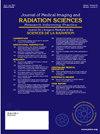亚太地区放射技术人员的流动:日本与澳大利亚的比较研究
IF 1.3
Q3 RADIOLOGY, NUCLEAR MEDICINE & MEDICAL IMAGING
Journal of Medical Imaging and Radiation Sciences
Pub Date : 2024-10-01
DOI:10.1016/j.jmir.2024.101517
引用次数: 0
摘要
背景促进放射技术人员(RTs)的国际流动有可能提高从业人员个人的临床实践水平,并在他们回国后促进其所在国和原籍国的发展。最大限度地发挥这种流动的优势并控制其弊端的关键在于国际合作和信息交流。本研究调查了康复治疗师的执照/注册制度,以探讨促进合格的康复治疗师在亚太地区跨国流动执业的可能性。方法根据两种主要的执照/注册制度:单一注册和多重注册,在亚太地区选择了十个国家/地区。我们向专业协会的主席或国家注册机构的董事会成员发出了邀请。参与者填写了初步调查问卷,随后进行了半结构化在线访谈。采用专题分析法对数据进行了分析。结果在日本,诊断成像、放射治疗和核医学在一个许可证下运作,而澳大利亚则要求三个专业分别注册。在日本,文凭是最低学历要求,而澳大利亚则要求学士学位。这两个国家都提供通过个人评估确定的执照/注册途径。语言被认为是两国间 RT 人员流动的主要障碍之一。我们正在对其余国家/地区的系统进行分析,旨在为 RT 在亚太地区执业提供信息并确定潜在的途径。如果有适当的政策和策略,完善的国际流动有可能缓解劳动力短缺问题,提高患者安全,促进临床实践的共同发展。本文章由计算机程序翻译,如有差异,请以英文原文为准。
Mobility of radiological technologists within the Asia Pacific: a comparative study between Japan and Australia
Background
Facilitating international mobility among radiological technologists (RTs) has the potential to enhance clinical practice of individual practitioners, their host countries and their country of origin when they return home. The key to maximizing the benefits and managing drawbacks of such mobility lies in international cooperation and information exchange. This study investigated the licensing/registration systems for RTs to explore the possibility of promoting transnational movement for qualified RTs to practice within the Asia Pacific region.
Methods
Ten countries/regions in the Asia Pacific region were selected based on two primary types of licensing/registration systems: single and multiple registration. Invitations were extended to presidents of professional societies or board members from national registration bodies. Participants completed an initial questionnaire, followed by semi-structured interviews online. Data was analysed using thematic analysis. This presentation focuses on Japan and Australia, comparing the similarities and differences of a single and multiple registration respectively.
Results
In Japan, diagnostic imaging, radiation therapy, and nuclear medicine operate under a single license, while Australia requires separate registration for each of the three specialisations. In Japan, a diploma is the minimum education requirement, whereas Australia requires a bachelor's degree. Both countries offer licensing/registration pathways determined through individual assessments. Language was recognized as one of the main barriers in the mobility of RTs between the two countries.
Conclusions
The unrestricted movement of RTs between Japan and Australia is presently limited. Our ongoing analysis of the systems in the remaining countries/regions aims to inform and identify potential pathways for RTs to practice within the Asia-Pacific region. With appropriate policies and strategies in place, a well-established international movement has the potential to mitigate workforce shortages, enhance patient safety, and foster mutual development in clinical practice.
求助全文
通过发布文献求助,成功后即可免费获取论文全文。
去求助
来源期刊

Journal of Medical Imaging and Radiation Sciences
RADIOLOGY, NUCLEAR MEDICINE & MEDICAL IMAGING-
CiteScore
2.30
自引率
11.10%
发文量
231
审稿时长
53 days
期刊介绍:
Journal of Medical Imaging and Radiation Sciences is the official peer-reviewed journal of the Canadian Association of Medical Radiation Technologists. This journal is published four times a year and is circulated to approximately 11,000 medical radiation technologists, libraries and radiology departments throughout Canada, the United States and overseas. The Journal publishes articles on recent research, new technology and techniques, professional practices, technologists viewpoints as well as relevant book reviews.
 求助内容:
求助内容: 应助结果提醒方式:
应助结果提醒方式:


